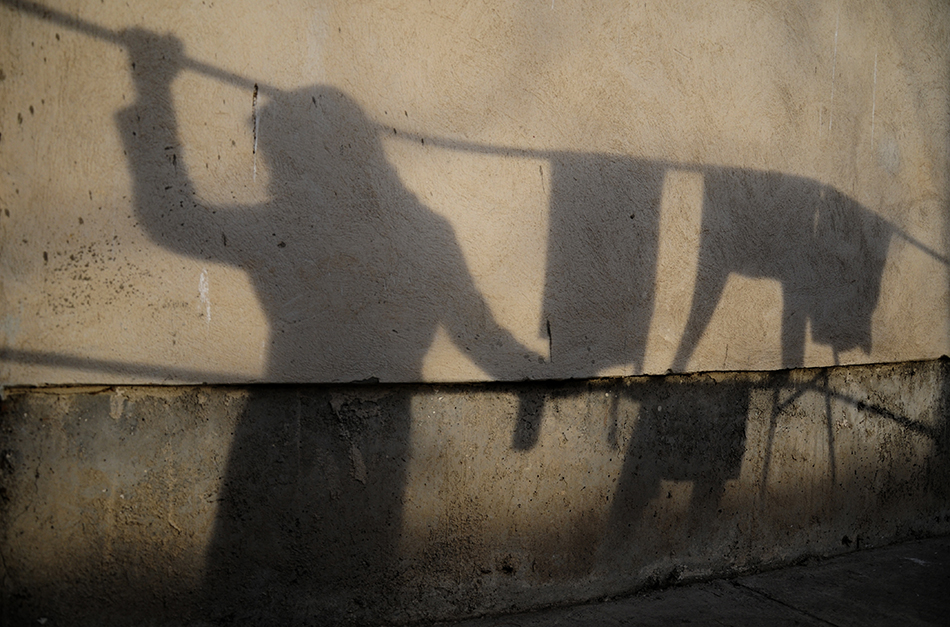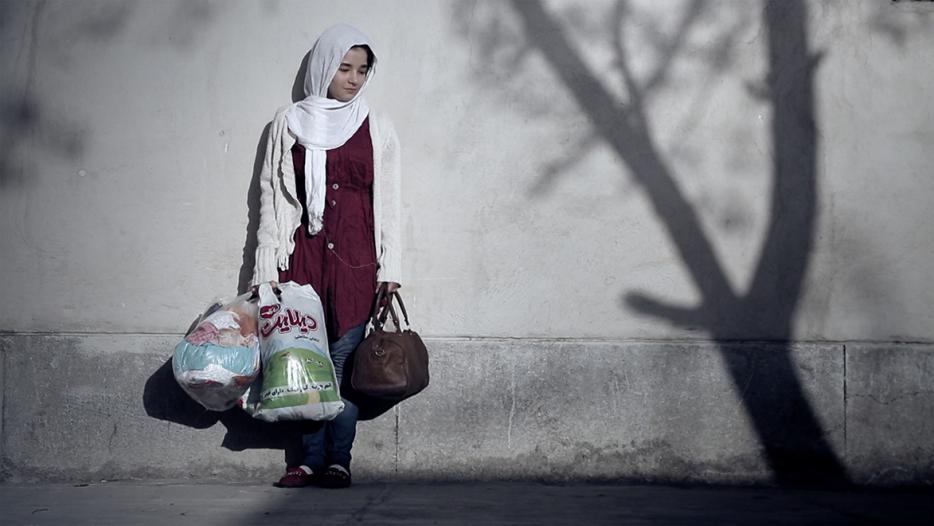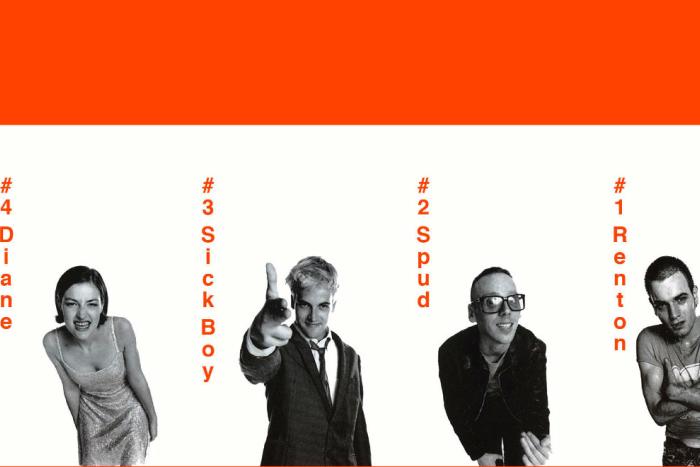Mehrdad Oskouei has been one of the biggest names on the Iranian documentary scene for the past decade. Born in 1969, Oskouei studied film directing at Tehran University of Arts and then worked in theatre, before beginning his career in documentary filmmaking at the turn of the century. Outside of his native country, he is perhaps best known for his award-winning stories about women’s oppression, such as The Other Side of Burka, and for Nose, Iranian Style, an investigation into the nose job epidemic. Yet, it is with his last three films that he’s truly made his mark at home.
Beginning with It’s Always Late for Freedom (2007), Oskouei entered the Centre for Correction and Rehabilitation of Young Adults to tell the stories of children convicted of crimes and the difficulties they face. He followed up on that film with The Last Days of Winter (2011) and has rounded up the trilogy with Starless Dreams (2016). The latest installment is rather special, because Oskouei has obtained permission to film inside a girls-only centre. That he has managed this feat despite the strict bureaucracy in the Iranian detention system is nearly miraculous, but the even bigger feat is perhaps gaining the trust of his subjects. Many of the girls are imprisoned for crimes committed against their male abusers, but Oskouei insists that the unprecedented presence of him and other male members of his crew was not an issue during filming. “When they saw my previous features about the Centre and were confronted with my sincere and honest approach, they welcomed the opportunity to tell their stories, and I followed their lead.”
With a series of incisive interviews and a precisely stylized rendering of this closed environment, Oskouei delivers a compassionate and heartfelt picture of the Centre that humanizes its inhabitants. Simultaneously, his confrontational approach poses difficult, critical questions about a society that has been unable to deal with sexual abuse, poverty and a rampant drug problem. Oskouei was awarded best director prizes for the film at both the Cinema Vérité and Fajr film festivals in Iran and the Amnesty International Prize at the Berlinale (an award he shared with the festival’s Golden Bear winner, Fire at Sea). This week at True/False Film Fest in Missouri, he will be honored as the recipient of the festival’s True Vision Award.
Amir Soltani: You’ve had quite a month with all these awards. Congratulations!
Mehrdad Oskouei: It’s been really wonderful, to be honest, but what’s more important is that all the screenings of the film have been sold out so far, even in Berlin, and people have come up to me on the street and said they were very touched or that they couldn’t stop crying. People are surprised by how intimate my camera was with the characters and how joyous and intelligent these girls really are in their interactions. This is really what matters. It’s the real reward for a documentarian. I make the films only so people can hear these stories.
Can you speak about where you started your career and your journey to this film?
When I was fifteen, I decided to commit suicide. My father went bankrupt so the family’s finances were taking a big toll. I took ropes and weights to the seaside and decided to drown myself so my siblings could have better opportunities. While at the shore, something surreal happened. A car arrived out of nowhere late at night and more people than it could conceivably fit started coming out of it, playing loud music on their sound system and began dancing and swimming in the water. That moment felt like a catharsis, like a reminder that the world would go around and life would continue whether I was gone or alive. I changed my mind. After that, I started acting in theatre, but there was a sense of injustice in my dad’s situation, which made me feel uneasy about frivolous art. He was honest and hardworking. He’d been a political prisoner in the Shah’s regime for his revolutionary efforts, and all he wanted was to help people. He’d give away free food at his supermarket before going bankrupt. At the time, I felt a sense of being forgotten. I wondered why no one heard our voice, our pain. I decided then that if I had the opportunity, I would become the voice for the voiceless. That took me away from stage acting to documentary. I made my first film at 17. I sold everything I had, down to my textbooks and put together enough money for an 8mm film. I wrote my second film when I was serving in the military. When they found out I was sneaking time to work on that, they punished me in different ways, but by the time they banished me to the south of Iran to work on fields, I’d already finished filming. Eventually, I applied to university and studied cinema and all the while made films and worked as a professional photographer. I’ve worked with all types of film, but eventually moved to video. I think the digital revolution changed the documentary world in magnificent ways. It’s a gift. I’ve made 25 films, short and long, which I finance myself in whatever way I can.
How did your relationship with the Centre start in the first place?
I wanted to make a film about the kids at these centres for years, but it was really impossible to enter the system. I first attempted to film there in 2006. I tried for six months to get the permissions but was unsuccessful. Eventually, I took my two-page original concept to the federal judiciary for one final plea. I presented all the research I had done and asked for a really short filming period. They took it from me and sent me home. I was in the car talking to my assistant about how the project was bust after all these months and just then my cell phone rang.
That sounds very typical of Iranian bureaucracy. Just when you think there’s no way forward…
Exactly! They gave me permission to film in the Centre for ten days under the judiciary’s supervision. They wanted the rushes sent to them every night. We shot almost everything I wanted in that short window. When I presented my final cut to the authorities later, it really had an emotional impact on them. Later, I decided to make a film about the occasional field trips that the centre would take the kids to. It would always be either the seaside or a religious site on pilgrimage. The sea means a lot to me of course. The whole months-long process of obtaining permission for the second film began with that idea. The censors joked that I was getting too cocky and I should be thankful for the one film they allowed me to make. This went on for another four years, but I eventually got it made in 2010. Before filming the second chapter, I learned the Centre also had a girls-only division. The security and secrecy around this division was airtight so I got the ball rolling early. The research for the latest film had been in progress for seven years when permission to film was finally granted. We were allowed three months of access but shooting only took place over 20 days in that period.
As a filmmaker, you had two hurdles to pass this time: to gain permission to enter the girls-only centre, but also to connect with the girls. Were they receptive to your presence?
The important thing for me was trust, both with the authorities and the girls. With the Centre and its governing body, the State Prison Organization, I had gained their trust after the first two films. I promised them the film wouldn’t be shown on television in Iran, and that it would be for festivals, universities and cultural centres. They knew the type of film I wanted to make and that I wasn’t interested in political protest so much as social duty. When I screened the films outside of Iran, people would comment that I don’t really show the children being mistreated. I’ve continuously had to remind people that I’m an independent documentary filmmaker, not an agent of anyone, and I’ve only filmed what I really saw. You can come to Iran right this moment and you’ll see that the real condition is what is on the film. I haven’t tried to save anyone’s face. In any case, you have to be honest with yourself and your audience. Obviously, these children don’t have great lives, but I think the Centre is helping them a lot.
Is the Centre completely government-funded?
Yes. There are private parties who go in to hold classes, donate books, and help in other ways, but it’s otherwise funded by the government. I don’t think it’s possible to make a film there anymore either. The management has changed, security has been tightened even more, and the staff has told me I snuck my film in just under the wire. I’m very happy I got them made. I think it’s going to have a big, positive impact on the Centre, on their staff and their opportunities, and on the children whose voices weren’t being heard.
Tell me about your relationship with the kids.
They are mostly teenage girls who have had trouble with men in their past. They’ve had traumatic sexual experiences and have been harmed by men. To try to create some sense of trust and intimacy, I introduced myself to them as Amoo (paternal uncle) and that didn’t work so well. It turns out the uncles were in most cases the ones doing all the harm, so I became Daei Mehrdad instead. Daei (maternal uncle) was fine. Eventually I worked the crew into their hearts similarly. We developed a friendly, familial environment. They learnt about me, my family, my daughter; they watched my two previous films as well. They sensed that I was being open and honest within the first few days. They really welcomed me into their world.
This sense of trust really comes through in the film. The audience immediately feels that there’s no emotional distance between the camera and the subject and the girls are really frank with you.
In all honesty, if I felt that the subjects were uncomfortable with the camera. I would have stopped the shoot. I use my films as a method of psychoanalysis. In my interviews, if I can’t challenge the subjects psychologically, and consequently, challenge the sociological expectations of the audience, then there’s no point in filmmaking
Was there a working script you started with, of ideas you wanted to get from the girls?
I shape the screenplay in the editing room. I borrow the structures of narrative storytelling from fiction cinema but with an overarching idea, not a script. For this film, the idea was a question that needed to be answered for myself: why should these kids, at this age, be in this place, and what leads them to be here? Once I enter the Centre, I need to find characters for my story. It’s the spine of the film. I find the characters through extensive conversations, to find the right focus for the film. The Centre’s staff members were incredibly helpful too. Some personalities fell off the story, because they didn’t want to share their stories with the camera, or other reasons. I don’t know what to expect when we begin, and especially with this film, there were curveballs along the way. For example, if one of the girls were to be released, we wouldn’t find out until at most 24 hours before her release, which meant a really crunched shooting period to get everything we wanted from her to close her arc. When Khatereh, the focal point of the film, was released, we were on a break from shooting and I was travelling by the Caspian Sea for research on another project. I got a call that she was being released in two hours, and I had a four-hour drive just to get to the Centre. I sent the team there and I got a cab. The poor driver was driving like a maniac. When we arrived, she was still there and thankfully we were able to shoot her departure. When the girls are released there’s no way to keep them at the Centre, for legal reasons.

How does this uncertainty affect the aesthetics of your film?
I have a general idea of the aesthetics when I begin all my films and this one was the same. I’ve worked with my cinematographer a few times now, so we understand each other emotionally and know what we want to achieve in terms of visual texture. Here, we knew what we wanted to conceal and how we wanted to navigate the Centre, with all its fences and barriers. Documentaries are still staged and stylized and it’s important to get the mood right in a film like this, to shoot from the right angles to emphasize the feelings of oppression or claustrophobia or camaraderie that each child feels.
Does making a film like this have an emotional toll on you?
Of course! The film doesn’t include everything we shot, and there were really disturbing storylines that totally shook me. I’m a very emotional person and the mental pressure physically affects me as well. I woke up very early every morning and by 7 we had started filming. The whole day I would try to conceal my emotions from the girls. At night when we wrapped, the production assistant would get me a cab and ask the driver to not talk or play music. I’d just throw myself in the corner of the back seat. When I got home, every night, I’d just take a shower, do my crying in there, and my wife and daughter would understand. I’d just leave the shower and jump straight under my blanket.
In the film, one of the girls asks why you don’t take the camera out and film their families. Did you consider that angle to the story?
You know, someone once asked Frederick Wiseman what the secret to the brilliance of his filmmaking was, and he said, “I limit the geography of my stories.” The biggest concepts in the universe can be found in the smallest of spaces. One needs only to look deep enough. Actually, Wiseman’s films, and a workshop of his that I attended in Amsterdam years ago, really affected my filmmaking. Before that, I’d go around the country and research for months on all aspects of a project. When I made my geography smaller, so to speak, I think I gave myself the chance to reach something more profound.
In Starless Dreams, the smaller scope enhances the sense of intimacy that the audience feels with your universe and characters.
If you feel the need to step outside the Centre, it means there’s something lacking in the girls’ story and I just didn’t think that was the case. In the film, the only time we see the outside world is through the fences around the building, but even that doesn’t project a feeling of liberation. The Centre for the girls is their complete universe at that moment. Most of them feel happier and safer there, and they have each other. Outside of that space, danger surrounds them, including from their own families. I tried to show their departures from the Centre as the beginning of a form of imprisonment.
Can you talk a little bit about the opportunities that documentary filmmakers have in Iran these days and what the local audience’s relationship is to documentary cinema?
There’s a new initiative in Iran called the “Art and Experience Group”, which screens arthouse films in select theatres for the public, and mid-to-feature-length documentaries are now under that umbrella. As a documentarian, I’ve never had the hope that my films would be screened for the public in my country, but for the past couple of years, there’s been an eagerness to bring docs to the screens. Thankfully, Art and Experience has opened that door for experimental films, animated films and documentaries, as well as packages of short films. I had a contract with the group to screen Starless Dreams later in the spring, but I voluntarily cancelled that because I thought it would better if the girls’ faces are not distributed widely. I think the festival and academic settings are sufficient for this film. It’s encouraging that people in Iran have shown so much enthusiasm for documentaries in the past couple of years. In the Fajr Festival this year, documentary screenings were sold out to completely packed houses, and important industry figures also came along. These were all big surprises and very welcome news. For years, I’ve dealt with having no budget at all, and almost no federal funding or help, so this is very heartening. I make money by teaching in universities and reinvest that in my films. I’ve always been indebted to my crews; they’ve put up with me so much. In addition, the sanctions on Iran had totally diminished our hopes of making any international money. My last two films didn’t return anything from their international sales, but my hopes are higher now, because of the lifting of sanctions internationally and because of the increased reception of documentaries in Iran.
Do you want to continue funding your films independently?
Yes, so I can stay true to my subjects and beliefs. I have to make films and be the voice of the people who don’t have their own. It hasn’t been easy because I’m not connected to any organization. I’ve been fortunate that my films have never been censored, and I’ve been allowed to work the way I wanted to, but I still need the films to be seen in order to do my duty. I like coming to festivals just so I can get the films seen in as many places as possible.
Do you think the increased interest in documentary something more global than just Iran? I feel like audiences everywhere are more interested these days.
Yes, but I think the fact that more people are interested around the world means that documentaries from Iran, Asia, Africa and Latin America are being pursued in an unprecedented way and that brings a lot of new voices to the fray. In an increasingly globalized, multi-cultural world, we need this range of colour to be present. Otherwise, the powerful global media organizations will eventually distort the images of all “smaller” cultures. You know, I still get asked questions like “are there cars in Iran? Do people still ride camels?” [Laughs] Imagine how much room there is to educate and inform. We should be having global cultural dialogues in this day and age, not just monologues. There are very stereotypical images published of our people in the world, but I think we need to be able to project our own image more faithfully, and giving more opportunities to documentarians would help that tremendously. Paradoxically, I think a lot of our stories are universal; the world just needs to discover that. It would bring us all closer together. It’s unfortunate, but sexual abuse, as an example, happens everywhere in the world. The girls in my film happen to be in Iran, but they’re not specific to it.
I think another factor that helps the opportunities for documentarians and is boosting the quality of films as well is the prevalence of digital. It’s giving a lot of talented filmmakers a chance to make films cheaper and more liberally. And maybe that makes audiences more interested as well?
The reality is that the world around us is changing at a blistering, unprecedented pace. There are more wars and unforeseen attacks and crises. It’s unfortunate, but we have these shocking events all across the world. Who knows what will happen in Europe tomorrow? I hope there’s never another catastrophe again, but I’m worried. Everybody’s worried on some level. And I think people are becoming more interested in documentaries because it helps them understand the world around them, because fantasy is not enough anymore. That’s why you get a documentary film like Gianfranco Rosi’s Fire at Sea, about refugees arriving in a tiny island in Italy, winning the top prize at a major festival like Berlin. Documentary is always searching for the truth, and because the media is failing so consistently to capture the human element of the truth, people are gravitating toward documentaries. It is a tool for comprehending the world. I don’t mean to say that documentaries are newsreels, but that as a documentary filmmaker you bring something emotional to the rigidity of reality. You pour your soul into it. This is the part that’s missing elsewhere in the world of media. I think everyone is recognizing that, the audiences, the industry, festivals. People’s need to understand themselves and the world around them is what’s driving the popularity of documentaries. I also think that because of our constant access to content, on social media and the internet, we have difficulty finding meaning and purity. You have to search harder. It’s very valuable when in a fast-paced world, documentarians spend the time to live with their content and develop it in search of something deeper. This is a luxury that fiction filmmakers don’t have. The industry demands that they produce their films at a certain rate. Obviously we don’t have the luxuries of making films the way they do, but on the other hand, we get to spend as much time with our subject as we want.
Because you’re going to True/False, I have to ask you about this boundary between truth and falsehood in cinema. In the past few years, there’s been a growing trend toward films that blur the line between fiction and documentary. This mode of storytelling has always existed to an extent in world cinema, but in Iran it has a very rich history. Ovanes Ohanian was doing it in the ‘30s and then Kamran Shirdel and Parviz Kimiavi and others carried the torch in the 1960s and 1970s. Of course, the world got to discover it through Abbas Kiarostami’s Close-up. What draws Iranian filmmakers to this true/false line?
Even Asghar Farhadi has done that to an extent. Iranian narrative filmmaking has always been more experimental than most national cinemas, and is always gravitating toward the documentary mode. With new means of filmmaking, it’s only going to grow more radically. One of my students is making a fiction film at the moment with a small camera in her sunglasses just as she walks around. That’s an unprecedented level of truth in fiction cinema. I think Iranians always viewed cinema as a tool, a means of socio-political expression. That line of thinking naturally pushed them toward playing with the cinematic form to achieve a greater truth, to be able to tell stories that were authentic. Introducing elements of documentary filmmaking into fiction is just one of the ways that desire has always manifested itself.






